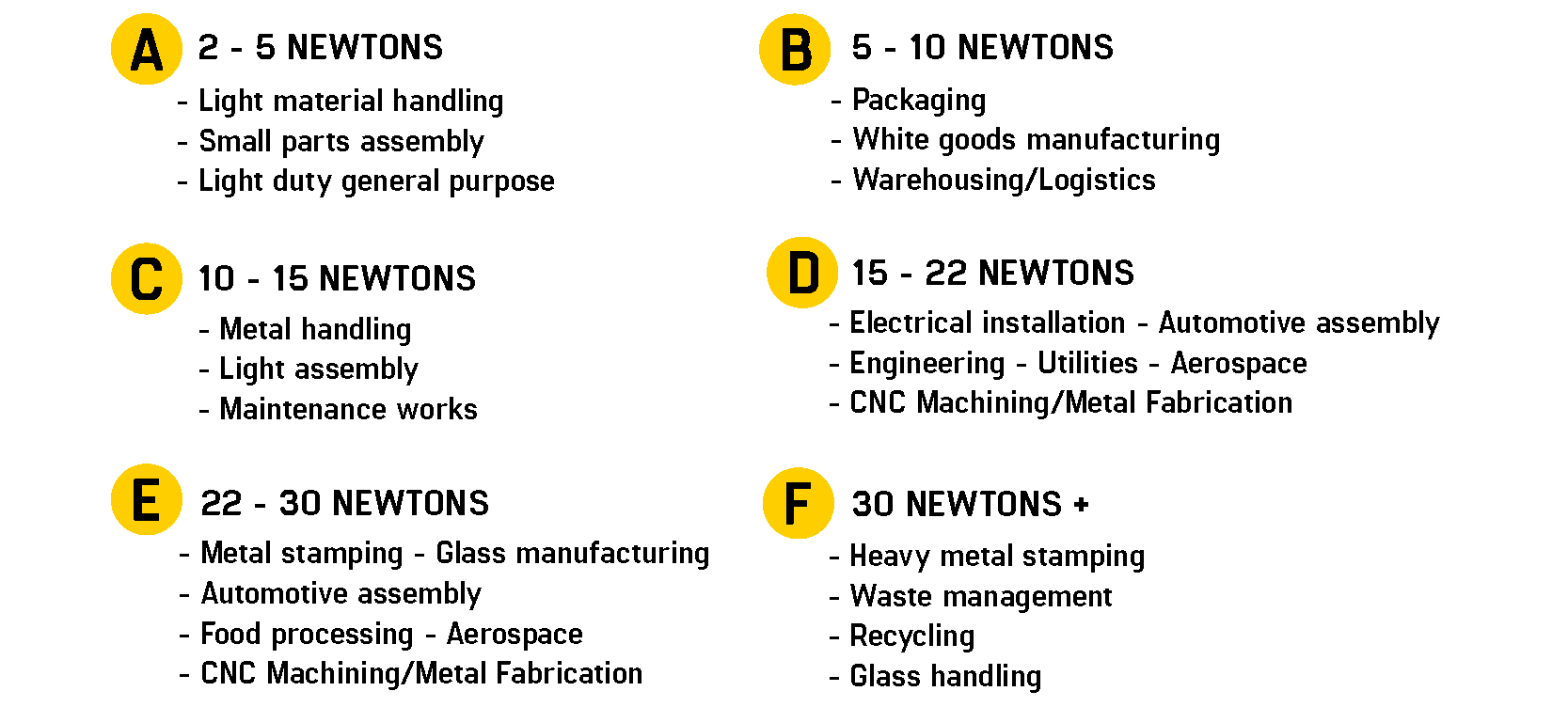What are the different levels of cut resistance in hand protection?
In the UK, the levels of cut protection for gloves are determined based on the EN 388 standard, which is widely used across Europe.
The levels of cut resistance in hand protection as defined in the EN388 standard, range from A to F, with a level A offering the lowest protection and F, providing high protection.
The levels are based on the amount of force, measured in Newtons, required to cut through the material.

How Are Cut Resistant Gloves Tested?
The EN ISO 13997 cut resistance test method is performed using a Tomodynamometer machine (TDM). It is fitted with a straight blade that is drawn in a single direction across the material of the glove under a controlled force. The cut resistance level is determined by the force required to cut through the material at a 20mm distance of blade travel.
To see how the EN ISO 13997 cut resistance test method is performed, click here.
Level A & B Cut Resistant Gloves
Gloves offering cut levels A and B provide low to moderate levels of cut resistance while maintaining high comfort and dexterity. These gloves are often chosen by workers in industries such as automotive after care, warehousing, and aerospace. Since tasks in these fields involve repairing and handling small, intricate objects, the glove needs to fit like a second skin while providing a level of cut protection.

Level C & D Cut Resistance Gloves
Gloves providing level C and D protection offer medium cut resistance. These gloves are used in industries that require both cut protection and dexterity, allowing workers to handle equipment that might cause cuts or abrasions. Common sectors for these gloves include construction, mechanical work, metal fabrication, where precision and safety are crucial.

Level E & F Cut Resistance Gloves
Gloves with E and F cut ratings, according to the EN388 standard, offer the highest levels of cut protection. These gloves are commonly used in industries with high risks, such as cuts, abrasions, and punctures. Workers in sectors like glass manufacturing, metal processing, and food handling rely on these gloves due to the sharp materials they work with and the equipment and machinery they use.

What to consider when reviewing your hand protection program
Conducting a comprehensive hand protection assessment with your supplier is crucial. This evaluation provides valuable insights into the types of gloves required, the tasks end users will perform, the potential machinery and equipment they may be handling and the environmental and handling risks. Based on this information, your supplier can recommend the most suitable hand protection for your specific roles.
For more details on our hand protection evaluation process, click here.
By understanding the different levels of cut resistance and selecting the appropriate PPE solutions you can greatly minimise the risk of hand injuries in the workplace.





